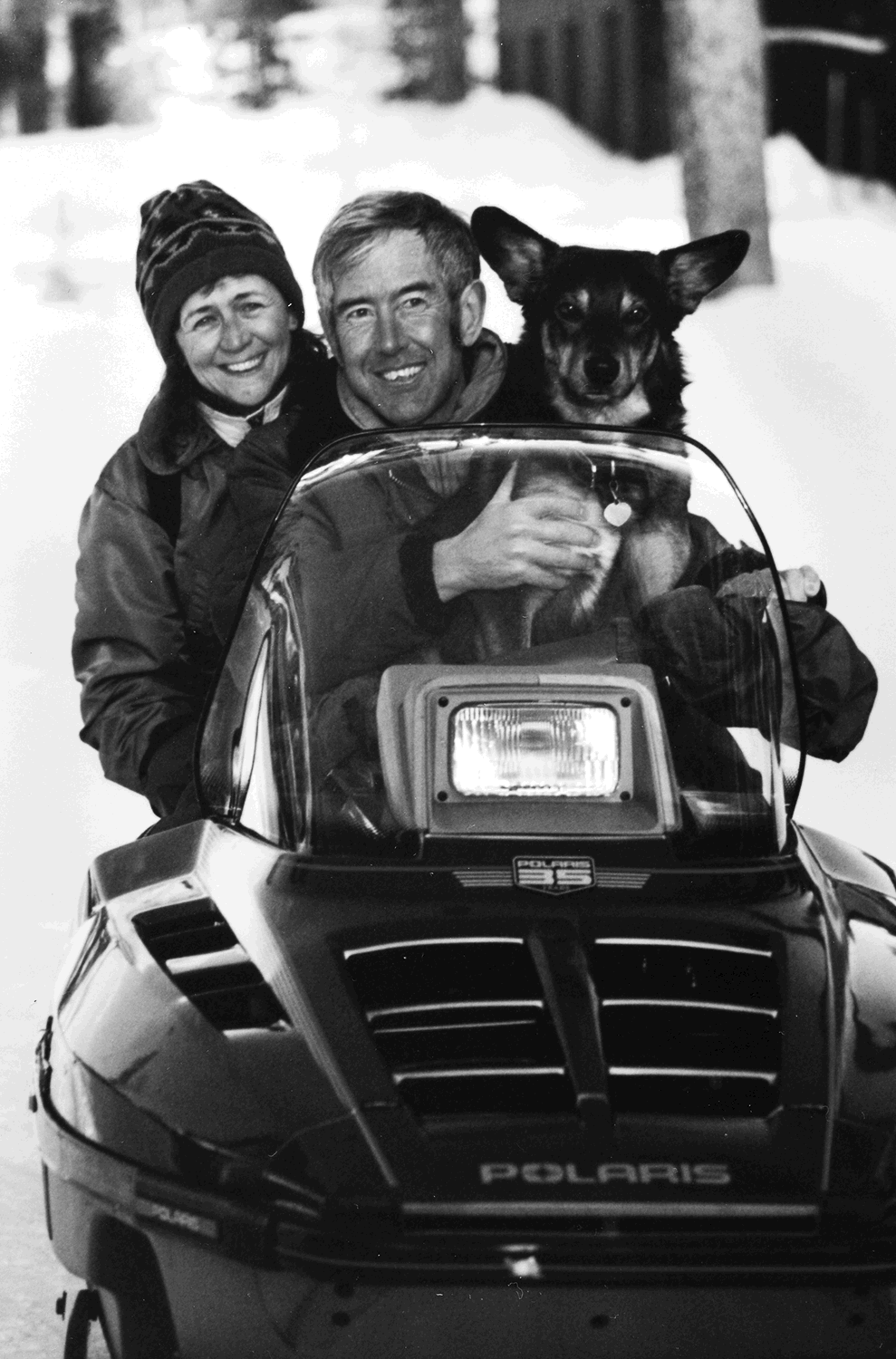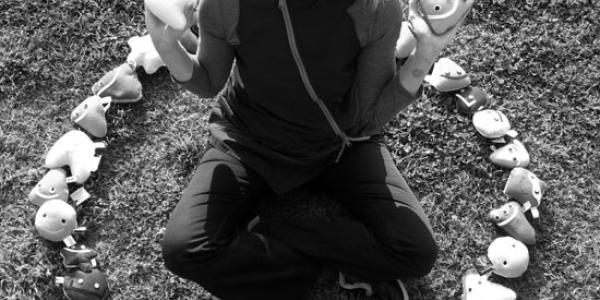
Marjane Ambler (Engl’85) learned to share the road with bison. That’s what you do when you live in Yellowstone National Park.
“You’d be snowmobiling and you wouldn’t see them at night because they’d be covered in snow,” said Ambler, who lived year-round inside the majestic, 2.2 million-acre park for nearly a decade.
After her husband, Terry Wehrman, a heavy equipment operator, was hired by the National Park Service in 1984 to pack the park’s roads for snowmobilers, the couple moved from Atlantic City, Wyo., to Lake Village, a tiny community 30 miles past Yellowstone’s East entrance.
Home was a quadraplex occupied by a dozen residents — eight park employees, some with spouses. There were no cellphones, no Internet and for most of their residency no television, said Ambler, 69, a semi-retired journalist and author.
In winter, work revolved around snow — shoveled from roofs to prevent collapse, groomed for snowmobiles.
Ambler, a lifelong skier, once spurned the noisy machines. But from November to April, the park’s roads closed to cars and trucks.
“For five months of the year, snowmobiles carried the milk, eggs, hamburger and any guests brave enough to visit,” she wrote in her 2013 book, Yellowstone Has Teeth: A Memoir of Living Year-round in the World’s First National Park.
Ambler soaked in the park’s beauty, learning to recognize mice, coyote, otter and bison tracks.
With few lights to cancel out the stars, the night sky shimmered.
“One got the sense of being very small,” she said.
When the temperature dropped, Yellowstone Lake moaned as it froze, as if “someone were running a finger around the rim of a giant wine glass.”
Ambler learned Mother Nature was boss: “If it was 20 below, you’re not going to that concert.”
Bison and bears could kill, so “you always looked both ways.”
Even twitchy dogs were not to be ignored. “One night our dog was making these strange cries and quivering,” she said. “The next morning, we discovered a grizzly bear under the porch.”
Ambler spent her days writing: “Every writer’s dream is to have these long blocks of uninterrupted time.”
Days would go by “when the only interruption was the shadow of a swan across the window,” she said.
To foster community, the park residents held weekly potlucks.
Talk of religion or politics was discouraged. Instead residents discussed “snowmobiling — things we had in common,” Ambler said.
She found friends she might have overlooked elsewhere.
In April, the plows arrived. In May, the park gates opened.
“It was like moving to the city, except the city came to you,” she said.
In 1993, Ambler and Wehrman left for Colorado and Mesa Verde National Park. Today they live in Atlantic City and Lake Havasu, Ariz.
Leaving Yellowstone was a shock. “We’d lived there so long, we didn’t know what was normal,” she said. “Suddenly we could walk to the post office.”
Looking back, Ambler finds it hard to imagine who she’d be without the Yellowstone experience.
“It’s a place that really gets into your soul.”
Photo courtesy Marjana Ambler





